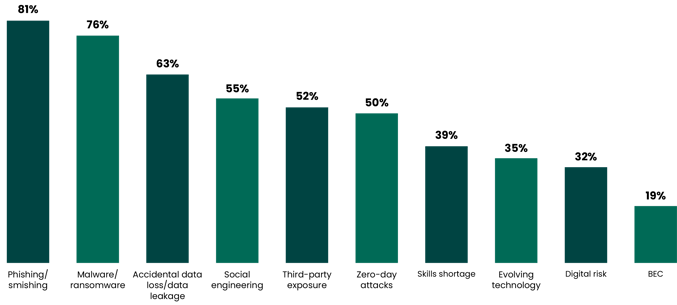 Organizations are finally dialing in on where they need to focus their cybersecurity strategies, starting with phishing. But the top four cited security risks all have one element in common.
Organizations are finally dialing in on where they need to focus their cybersecurity strategies, starting with phishing. But the top four cited security risks all have one element in common.
Organizations today realize that maintaining operational resilience is a matter of measuring and addressing risk. According to the 2024 Fortra State of Cybersecurity Survey Results Guide there is a distinct cybersecurity risk that stands out among its peers.
The risk associated with phishing and smishing topped the list in this report, with 81% of organizations pointing to this mode of cyber attack as the top security risk. And it should be, as it remains the top initial attack vector in cyber attacks and is continuing to grow in usage.
But there’s something deeper here of concern. Sure, phishing needs to be stopped; so put in security solutions that help detect and block those kinds of attacks. But the Fortra data makes it clear where the real problem lies. If you’re looking at the top four security risks, there’s a common theme:

Source: Fortra
In each of the four top risks, users play a material role in the specific practical interactions between attacked and potential victim. With an exception of malware installed via a vulnerability-compromised system, users are needed at some stage in the attack to enable the attacker.
This connects to another important piece of data from the same report, highlighting that 66% of organizations regard enhancing security culture and awareness as a primary cybersecurity initiative. This initiative encapsulates the importance of new-school security awareness training. The shift in perspective from viewing the user as a potential liability to an integral part of an organization's cybersecurity defense is crucial in dealing with the current threat landscape in the cyber world.
KnowBe4 empowers your workforce to make smarter security decisions every day. Over 65,000 organizations worldwide trust the KnowBe4 platform to strengthen their security culture and reduce human risk.
 Here's how it works:
Here's how it works:




